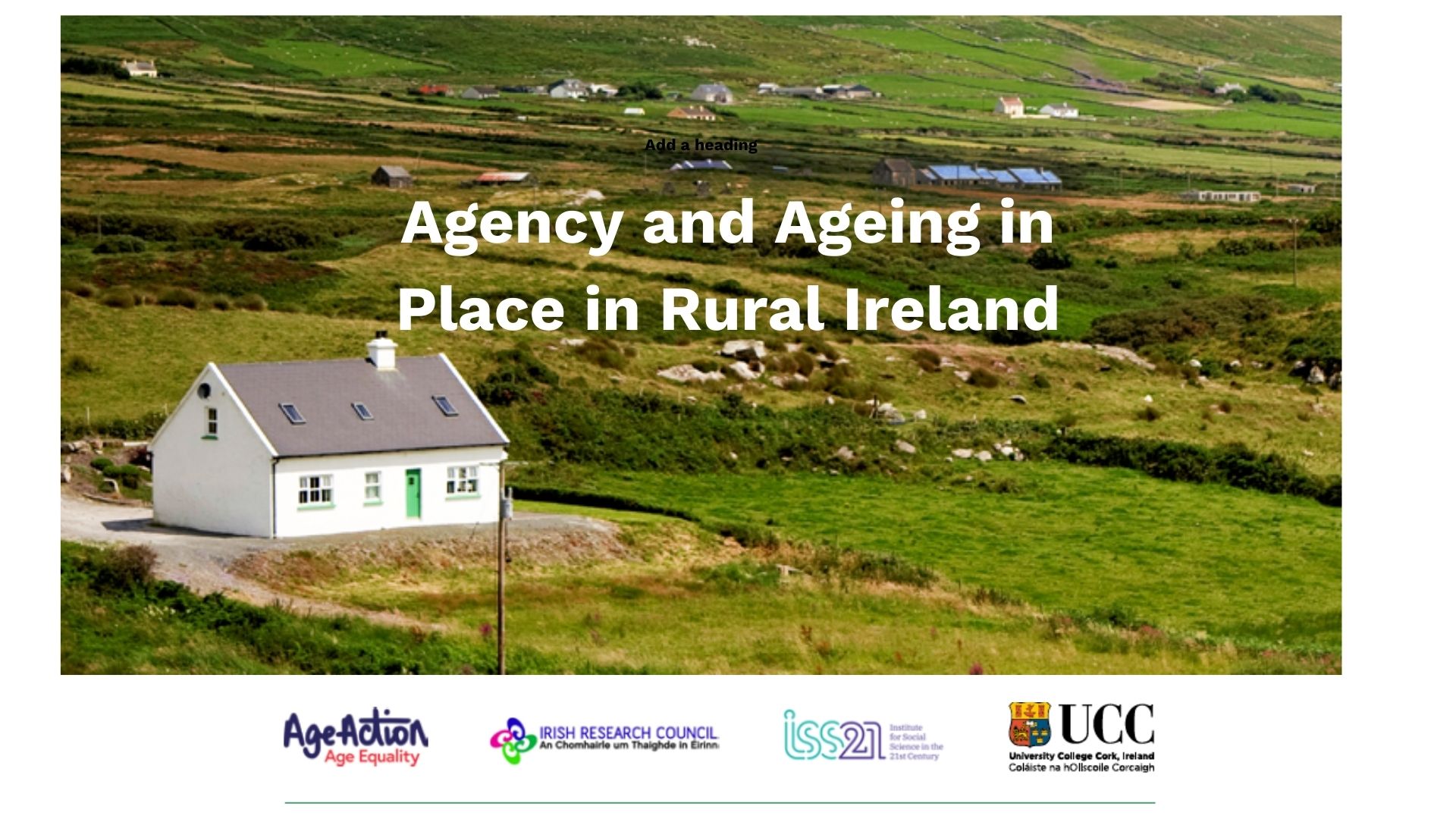
Agency and Ageing in Place in Rural Ireland was funded by the Irish Research Council’s (IRC) New Foundations Grant and conducted by the School of Applied Social Studies, University College Cork (UCC) from 2020 to 2021, in conjunction with Age Action, Ireland’s leading advocacy organisation for older people and ageing. The research aims to document the views of older rural residents in Ireland about ageing in place, including where they choose to live and the enabling factors and barriers that they identify for remaining in their homes and communities or moving into new homes and areas.
Methodology
At the heart of research is the voice of older people who live in rural areas. The project began by developing a Participatory Research Group involving members of Age Action's Glór advocacy group and University of the Third Age who worked with the UCC researchers in Spring 2021 to co-design a nationwide online/postal survey. Eleven Age Action members took part, 8 females and 3 males, aged 67-82 years. Starting with individual meetings, the research team then met with the group 4 times. The majority of the work took place online due to COVID-19 restrictions. The participants suggested themes and co-created the phrasing and order of the survey based on their experiences and views. This methodology brought the distinctive voice, knowledge, and ability of older people into the research resulting in a survey that everyone felt ownership of and that asked important questions on ageing in place in rural Ireland. The approach aligns with Age Action's mission of promoting the autonomy and empowerment of older people in Ireland and WHO Age-Friendly themes of civic participation, respect, and social inclusion. 218 people living in rural areas across Ireland took part in the survey and 19 people took part in follow-up focus groups in Summer 2021.
Key Findings
The research highlights the diversity of experience of home and community among the older adults in rural Ireland who took part. Most participants expressed a strong desire to remain in their homes and communities as they age. The sense of attachment to home and place had, for many, strengthened since the pandemic.
Ageing in Place - Choice and Connection
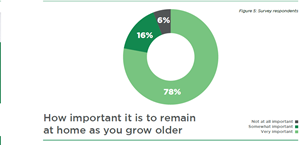
78% of respondents stated that it was very important to them to remain in their homes as they grow older. 69% of survey respondents said they had thought about where they would live in the future, while
31% said they had not thought about it. Most noted that their homes and community were very important to them. 63% of respondents stated that it was very important to them to remain in their community as they grew older and 30% said it was somewhat important to them to remain in their community.
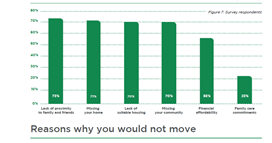
Most survey respondents would not like to move from their home because of a loss of proximity to family and friends (73%) and missing their home (71%). Most interact with friends, family, or neighbours daily (50%) or several times per week (38%) highlighting the importance of personal connections. Other factors which would make people reluctant to move include a lack of suitable housing (70%); missing their community (70%); and financial affordability (56%).
Ageing in Place - Supports
The findings from the survey were supported by the focus group findings. Participants elaborated on the areas of home maintenance, grants for modifications to the home and care in the home.
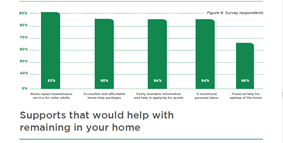
In terms of the wider support structure that would enable older people in rural areas to stay in their homes 93% emphasised the need for a home repair/ maintenance service; 85% highlighted accessible and affordable home-help packages; 84% noted the need for easily available information and help in applying for grants and 84% highlighted the requirement for a monitored personal alarm. 66% noted the importance of financial help for the upkeep of the home.
Other factors impacting the ability to remain in place as respondents age include wanting to be closer to amenities, e.g., shops (60%); wanting to be closer to health-care facilities (60%); wanting to be closer to family (56%); needing a smaller-sized home (48%); and fears for personal safety (43%). Over a third of respondents said another factor that would impact their decision to move is feeling lonely or isolated and a similar proportion said their current home was too expensive to maintain.
Overall, just 27% of survey respondents rated their community as an excellent place to grow older in, 54% rated it as good and 19% rated it as poor. This reflects a tension in the findings given the high level of respondents who wish to remain in their community even as the majority regard their community as less than excellent.
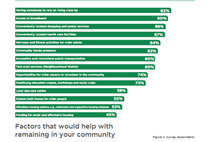
Survey respondents identified several factors which would alleviate some of the problems they identified and would help them to remain in their community as they age including access to suitable housing. 31% of focus group participants mentioned that they were either in the process of moving or had regular conversations with partners about doing so. Participants highlighted that the lack of suitable and affordable housing was a serious obstacle to allowing choices to be made as to where and how they wished to age. Several participants were all planning a house move but noted their difficulties in finding suitable and affordable housing. Some participants, however, highlighted the tenuous nature of their living arrangements and their sense of alienation from place. This was particularly the case for the participants who were renting, who had recently moved locations to be closer to children, or who found the limited facilities and social opportunities in their rural environments restrictive.
Ageism
Ageist stereotypes which serve to marginalise the lived experiences and needs of older adults were also brought to light in the research as participants struggle to challenge the invisibility associated with ageing and to be part of securing the changes they would like to see implemented. In many ways, the research process itself supported their sense of agency. All participants highlighted that their involvement in the research process had made them feel recognised, empowered and more aware of their sense of agency. This highlights the value of participatory approaches in not only bringing to the fore the voices of older people but also in supporting a greater awareness among older adults themselves of their collective agency. This collective voice is vital for ensuring the representation and recognition of older adults in shaping the context of where and how they wish to age.
Conclusion
The research highlights that the ability of participants to realise their preferences as they age relies not only on housing, but also upon many other policy areas including transport, healthcare, home help and maintenance, technology, security, and the revitalisation of rural areas through national and local development policy. Greater availability of suitable, attractive, affordable, and varied options in their local contexts in terms of housing and community supports would enable older people living in rural areas to exercise their agency in meaningful ways. It is evident that a comprehensive, holistic government approach, in conjunction with the community and voluntary sector, is required to ensure that the desires of older people living in rural areas to age in place are enabled.
